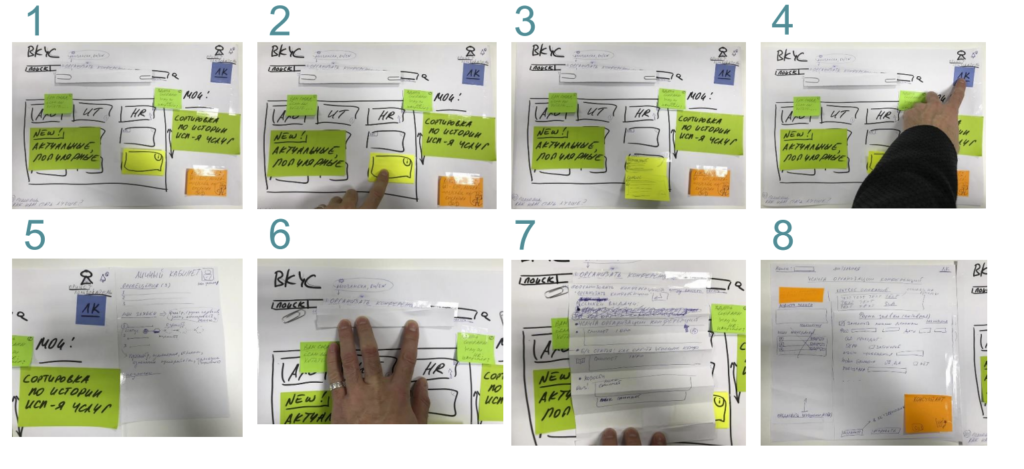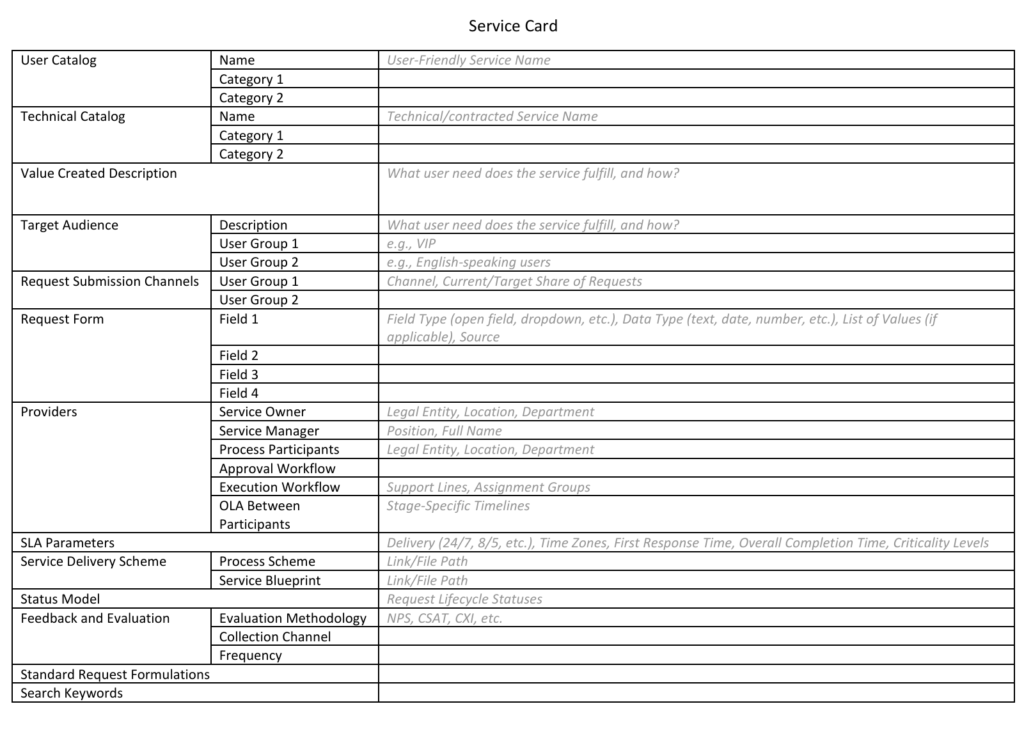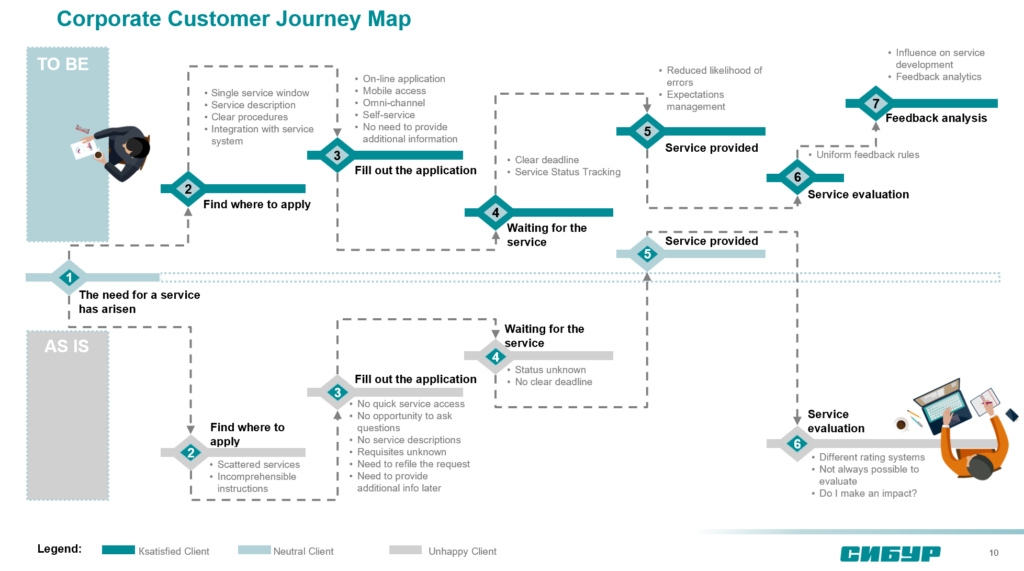Project Snapshot
Timeline: August 2018 – Mid-2019
Scale: 44,000 employees, hundreds of corporate services
Key Techniques & Tools:
- Research: Case test surveys, in-depth interviews, co-creation workshops
- Design: Customer Journey Mapping (CJM), Service Blueprints, Service Card Templates
- Management: SLA/OLA development, cultural transformation workshops
Results:
Satisfaction scores at 4.93/5
90%+ digital adoption rate
50% reduction in support costs
In 2018, I undertook a transformative project with SIBUR, Russia’s largest petrochemicals company, to modernize their internal corporate services. With over 44,000 employees and complex legacy systems, the company faced significant challenges in accessibility and efficiency of its internal services.
This project marked a milestone in my career, as I successfully led it from inception to implementation using the principles and methodologies of service design—a first for the organization.
Strategic Mission: Transforming Accessibility and Efficiency
At the project’s start, corporate services at SIBUR were scattered across various intranet systems, existing in disparate formats like text documents, templates, spreadsheets, and phone directories. Key challenges included:
- Low awareness: 25% of services were unknown to employees.
- Inefficiency: Only 1.5% of requests utilized the existing service portal, which was designed for accounting purposes rather than user needs.
- Information gaps: 52% of employees struggled to find services, and 67% needed better descriptions and instructions.
- Feedback barriers: 89% of users lacked a mechanism to provide service feedback.
The goal was to create a unified, user-centric platform to simplify access, improve transparency, and enhance user satisfaction while reducing operational costs.
Approach: Research, Collaboration, and Innovation
Key Steps:
- Quantitative Research:
- Conducted a case test survey with several hundred participants to establish baseline metrics and build stakeholder trust in data-driven decisions.
- Qualitative Research:
- Investigated barriers and pain points through in-depth interviews and workshops with service consumers and owners.
- Collaborative Prototyping:
- Facilitated co-creation sessions with stakeholders to design a unified service portal that addressed key irritants and inefficiencies.
- Standardization:
- Introduced a corporate-wide service definition:
“A service is a documented process that creates value for a client by meeting their needs at a defined quality level and timeframe, with clear ownership, execution responsibilities, and feedback mechanisms.”
- Introduced a corporate-wide service definition:
- Tool Development:
- Created detailed service cards for each service, including:
- Owner information
- Target audience
- Request workflows
- SLAs and OLAs for all process stages
- Feedback and monitoring mechanisms
- Created detailed service cards for each service, including:
Deliverables and Innovations
Unified Portal:
- Designed and launched the SIBUR Corporate Services Portal, integrating best practices in usability and functionality.
- Features included automatic routing, transparent execution timelines, status tracking, and feedback options.
Pioneering Corporate-Wide Innovations:
- Developed and implemented the first-ever corporate service catalog management method at SIBUR.
- Introduced a quality management methodology tailored to align corporate services with measurable performance standards and user needs.
Service Catalog:
- Built a comprehensive, user-friendly corporate services catalog with detailed service cards, enabling seamless user navigation.
Cultural Shift:
- Conducted over 10 workshops and seminars to instill a client-centric culture within the organization.
Outcomes and Impact
- Improved Accessibility: Over 90% of requests were submitted through the new portal within 3 months of launch.
- User Satisfaction: Satisfaction scores increased from 4.65/5 to 4.93/5, reaching a historic high of 98.6%.
- Reduced Costs: Halved first-line support costs, saving over $1 million annually.
- Efficiency: Only 6% of requests were categorized as “Other,” indicating a highly effective service catalog.





